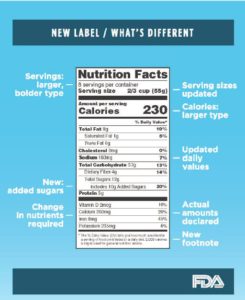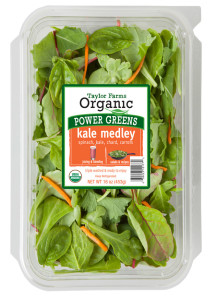Food-Navigator-USA’s Special Edition on Organics
This is one of Food Navigator-USA’s special editions in which this industry-focused newsletter collects several of its posts on particular topics—in this case, organics.
But first, take a look at the USDA’s summary of trends in organic food sales:

Special Edition: Where next for organics?
According to the Organic Trade Association, organic sales increased from $3.6 billion in 1997 to over $39 billion in 2014. But can the meteoric growth continue? And will organic ultimately replace the more nebulous ‘all-natural’ as consumers increasingly look for claims that are underpinned by consistent standards?
- Annie’s president: Today 4-5% of the US food market is organic, but we could get to 20%: As the debate over the meaning of the most controversial term in food marketing (‘natural’) heats up now the FDA has finally weighed in, more food companies will seek organic certification, predicts Annie’s president John Foraker, who reckons organic will ultimately account for 20% of the US food market (vs around 5% today)… Read
- From croplands to chicken coops, organic manufacturers get their hands dirty to anticipate looming shortage: Companies from Chipotle to Costco are creatively coming up with ways to keep their organic supplies steady, but mid-sized, natural category veterans are concerned about the big fish jumping into a small and shrinking pond… Read
- Nearly three-quarters of families make an effort to buy organic food, OTA survey reveals: Buying organic is a top priority for many American parents, especially when it comes to the food they feed their children, according to new research form the Organic Trade Association. .. Read
- OCA sues Hain Celestial, Honest Co, over organic labels; Hain insists it ‘fully complies’ with USDA standards: Organic infant formula products from high-profile brands Earth’s Best (Hain Celestial) and The Honest Co contain a “spectacular array” of ingredients that are prohibited under the Organic Food Production Act, according to lawsuits filed by The Organic Consumers Association earlier this month… Read
- USDA reports 12% increase in US certified organic operations between 2014 and 2015: New data from the US Department of Agriculture (USDA) reveals a 12% increase in US certified organic operations between 2014 and 2015, while the total retail market for organic products is now valued at more than $39bn in the US and $75bn+ worldwide… Read
- Mom Made Foods: Everyone wants to feed their kids nutritous meals, but not everyone has time to cook them every night: If you visited Expo West, you probably noticed that a large number of the exhibitors were touting snacks or beverages. Frozen meals? Not so much. But while the world probably doesn’t need another nutrition bar or cold pressed juice brand, busy parents would definitely like more options when it comes to what to give their kids for dinner, says Mom Made Foods founder Heather Stouffer… Read
- USDA wants to strengthen animal welfare rules under the organic standard: A proposed regulation that would strengthen and clarify organic animal welfare standards would align consumers’ expectations with production practices and improve their confidence in the organic seal, according to USDA… Read
- Good Food Made Simple to transition to organic: ‘We want to be clear what we stand for, and ‘all-natural’ is not clear’: Good Food Made Simple – one of a new wave of companies on a mission to revitalize the frozen food aisle – is transitioning its burritos and wraps to a ‘made with organic ingredients’ platform and ditching the much maligned term ‘all-natural’ as part of a brand refresh… Read
- Limit certifications on packs to most important to maximize impact: Product packaging today often is cluttered with so many certifications that consumers’ can’t absorb everything in the brief time they look at labels in stores, and as a result the icons’ impact is diminished and manufacturers likely aren’t getting their full value, according to a CPG marketing manager… Read
- EXPO WEST 2016: ‘Unstoppable’ growth in natural, organic and healthy?: From the apparently ‘unstoppable’ growth in the natural and organic products industry to the FDA’s ‘natural’ probe, check out our gallery of highlights from the education sessions at Expo West… Display
- ‘Organic is now mainstream’: Daymon exec talks Gatorade’s organic launch: PepsiCo recently announced the launch of organic Gatorade for 2016, something an executive with Daymon Worldwide said is a forward-thinking move that is quickly becoming the norm… Read
- USDA expands insurance for farmers transitioning to organic production: The financially daunting three-year transition to certified organic production just became a little less risky for farmers thanks the USDA expanding crop insurance to better reflect the product’s actual value… Read
- Organic meat & dairy has more omega-3 but amounts aren’t ‘nutritionally relevant’: Organic meat and dairy products have more healthy omega-3 fatty acids according to a large meta-analysis review – but experts have warned the amounts are too small to actually have an impact on diet… Read
- Heavenly Organics’ shows “profits can create peace” by providing ethical jobs in conflict areas: Under cover of darkness, deep in Northern and Central India and the Himalayans, harvesters for Heavenly Organics gently brush away sleeping bees from wild hives to collect the velvety, organic raw white honey that fills the firm’s award-winning confections and line of pure honey. .. Read






